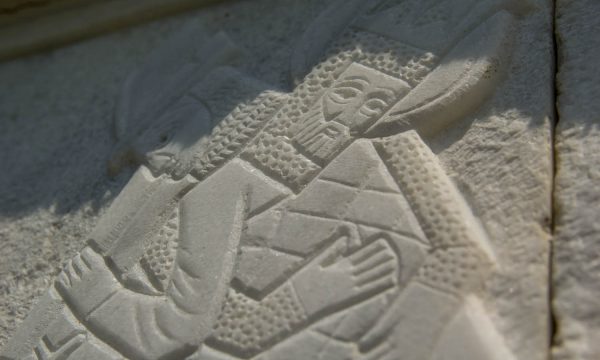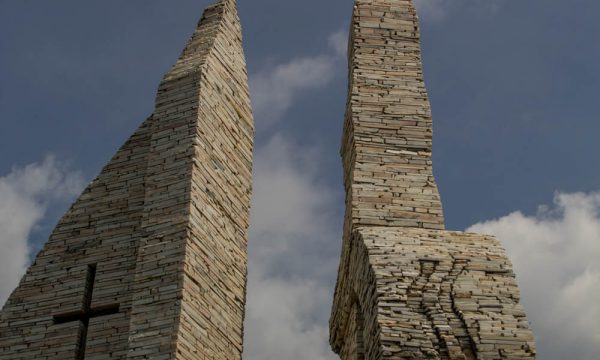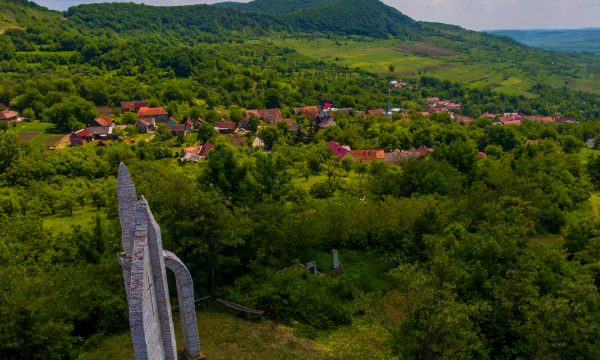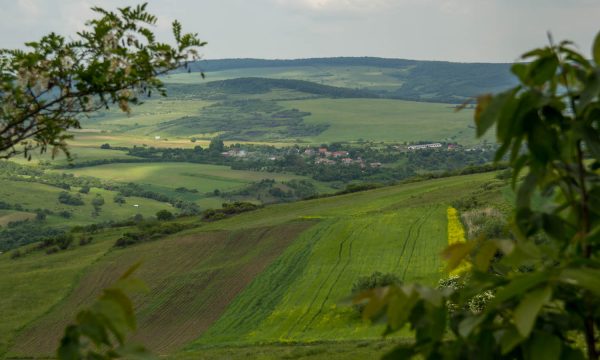Legend
The memory of King Saint Ladislaus, according to the records, still lived among reformed Hungarians near the Șieu (Hu: Sajó) in the 18–19th century. According to the historical tradition (the Illuminated Chronicle), it was in the vicinity of Chiraleş, which originally had Saxon and then Saxon-Romanian mixed population, around Cserhalom hill, that the battle between Saint Ladislaus and the invading Cumans (Ghuzz / Pechenegs) took place, which ended with the victory of Hungarian troops.

It is to this battle that the story of saving the kidnapped girl is connected, reproduced on murals in medieval churches throughout the Carpathian Basin in the 14–15th centuries. In the neighbouring, southern village of Țigău (Hu: Cegőtelke), inhabited by Hungarians, an imposing monument was erected a few years ago in the memory of the glorious battle and of St. Ladislaus. In Șieu-Odorhei (Hu: Sajóudvarhely), a rich folkloristic tradition claims that the hill was erected by the soldiers of St. Ladislaus using their helmet, so that their lord could see the battlefield. In the middle of the nineteenth century it was ‘the faith of the people,’ that the tombs near Chintelnic (Hu: Kentelke) held the remains of the fallen hostile soldiers.
It is also related to the battle of Chiraleş that, on the opposite side of the river, in Șieu-Măgheruș (Hu: Sajómagyaros), a place of worship with great history preserved the memory of the holy king in the nineteenth century. This is also proven by the boundary names related to him (the castle of King Saint Ladislaus, the mountain of Saint Ladislaus, the slope of Saint Ladislaus’s mountain, St. Ladislaus’s well), as well as the fragments of legends associated with these. In 1837 it was still held that the former castle had been built and inhabited by Saint Ladislaus himself after the battle. On the top of the hill, which in the early 20th century was still known as Saint Ladislaus castle hill, there once stood a chapel visited by the Catholics from the area on Saint Ladislaus’ day by pilgrimage. The waters of Saint Ladislaus’s well at the foot of the mountain were considered to be the best water in the countryside, and as noted, even the earl of Arcalia (Hu: Árokalja) had water brought to him every day from this source.

These traditions have now disappeared from the folk traditions of Șieu valley, but the legend of Cserhalom hill’s origins and the folklorized memory of the Battle of Chiraleş are still alive in the Hungarian-inhabited villages.
Natural heritage
The village lies on the southern bank of the Șieu (Hu: Sajó), a river that is a tributary of the Someșul Mare (Hu: Nagy-Szamos). When walking along the river from spring to autumn, we can often notice small eyes peeking out of the water. Their owners are likely to be yellow-bellied toads (Bombina variegata), a species still common in these parts, but decreasing in population and therefore protected across Europe. Their males attract the females with characteristic “unk-unk” sounds during the mating season.

These toads, however, are not the main reason for the existence of the Someșul Mare Superior Natura 2000 nature conservation site, which also includes the Șieu. Several more valuable fish species live in the rivers. One of them is the asp (Aspius aspius), a carnivore known for its spectacular hunting style. The European bitterling (Rhodeus amarus) can be found in the slower sections of the rivers and its young hatch and develop inside mussels. Inside one such ‘nursery’, several hatchlings can remain entirely protected from the external environment for about a month. The white-finned gudgeon (Romanogobio albipinnatus), which feeds on the small animals and debris of the riverbed, and the similar Kessler’s gudgeon (Romanogobio kessleri) are also typical of the area. Another notable fish is the Romanian barbel (Barbus meridionalis petényi), the only fish species to get its scientific name from a Hungarian scientist, János Petényi, to date. The Danubian longbarbel gudgeon (Romanogobio uranoscopus) is also found here.

The protection of the fishes and amphibians of this site is also important for the conservation of the Eurasian otter (Lutra lutra), a valuable semiaquatic mammal that feeds on these species. We can rarely see it during the day since it leads a mostly nocturnal life. Its presence can be most easily determined by its footprints and its characteristic faeces containing the bones of its preys, usually spotted on rocks.
